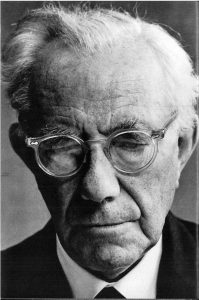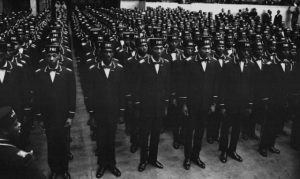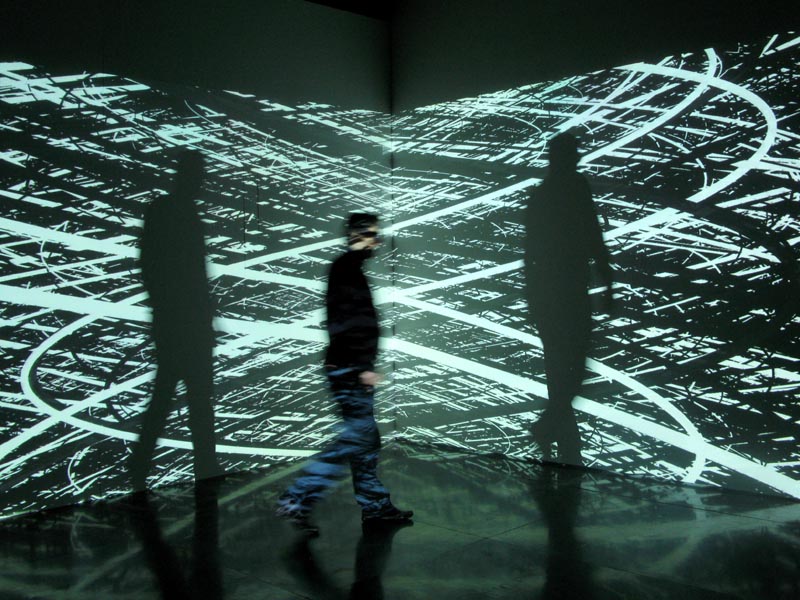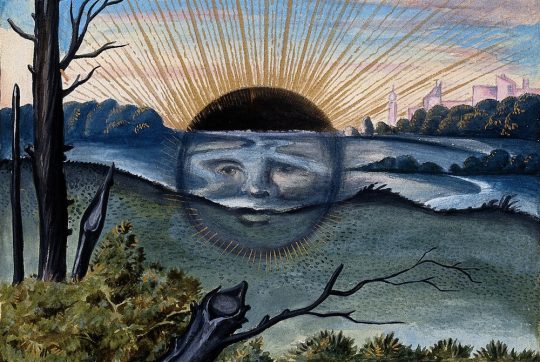The following is the first installment of a multi-part series.
One of the challenges of liberation theology is to think the radical political and social liberation of the oppressed in a way that is truly this-worldly. This challenge is already clearly apparent in Gustavo Gutierrez’s A Theology of Liberation in 1972, which insists on starting from “facts and questions derived from the world” in order “to be part of a process through which the world is transformed.” 1 In the tension between being fully in the world and radically refusing the system of oppression and exploitation that not only troubles the word but in every meaningful sense is the world as it is, liberation theology reclaims the tension of the early Jesus movement’s focus on the eschatological “kingdom of God.”
Liberation theology has largely sought to contribute to this as a “critical reflection” not entirely from within it, but by juxtaposing it to “the Word accepted in faith.” 2 Although liberation theologians do not interpret the Word in the crude sense of a kind of Biblicism or fundamentalism, they do look to criteria (for instance, Boff’s “brotherhood, justice, liberation, and goodness”), 3 that are ‘intuited’ to point to ways that existing conditions contradict “the divine plan”. 4
The Word itself for what can now be regarded as “classical” liberation theology is received within the hermeneutical circle, as Segundo outlines it in the first chapter of The Liberation of Theology. 5 Within this circle, the Biblical text occupies one pole of a bipolar process with four stages. These two poles are (1) profound and enriching questions and suspicions about current reality and (2) profound and enriching interpretations of the Bible. 6 The second pole is linked to though not exhausted by a certain static element, linked to divine revelation.
Segundo’s sophisticated and incisive analysis in this book surrounds that static element with a dynamism on all sides, since acceptance of the revelatory quality of what Sorbino calls “the deposit of faith” depends on a prior commitment, or option, made in the midst of a life that, echoing Kierkegaard by way of Camus, can only be lived forward and cannot be seen from an objective, transhistorical perspective. This commitment precedes and motivates the reception of revelatory content itself, and this revelatory content, once accepted, continues to be interpreted in light of the option that is being lived by the indivdiual or community doing the interpretation.
Segundo’s supercessionist but anti-Marcionite interpretation of the Hebrew Bible leads him to extend the circle, not just to Biblical interpretation, but to the Biblical witness itself. 7 Nevertheless, in Segundo’s account and “classical” liberation theology in general, revelatory content or “transcendent data” are contained in the witness as a whole: “transcendent data offered by God penetrate into the corresponding questions that arise within the whole of human experience.” 8
Paul Tillich’s theological circle has a similar static pole, ultimately the Bible as the original testimony to the event of Jesus as the Christ, 9 though in Tillich, this is qualified because the church is the source of that Biblical witness and not the other way around, 10 and the church itself is situated within a broader revelatory context that includes the history of religion and culture as a whole. 11 This latter context, which Tillich took up with enthusiasma at different points in his life and to which his dialogue with Buddhism represents a return toward the end of his life, was left uncompleted by him.
This article argues that Tillich’s concept of “Dreaming Innocence” as a poetic expression of the reality to which the Biblical myth of pre-lapsarian paradise points reflects a lingering nostalgia for just the kind of transcendent data that would be unsullied by the world and its conflicts and provide a criterion for liberatory theory and praxis when joined with concrete historical forms of oppression and exploitation. Nevertheless, Tillich’s development of this concept in the context of his theological work darkens Dreaming Innocence to such a degree that it raises questions about the appropriateness of any transcendent datum whatsoever beyond the ontological self-transcendence that, for him, is as ultimately real as it gets.
The image of a prelapsarian “innocence” becomes a rhetorical device that anchors political and

cultural practice to what is ultimately a Western colonialist norm that he explicitly rejects. Tillich’s development of the concept of Dreaming Innocence can inform emancipatory practice, but only if we allow the other side of the Western colonial experience to critically address not only the interpretation of Western religion and culture, but Western religion and culture itself.
Whatever else it may be, Paul Tillich’s Systematic Theology is a quintessentially and paradoxically American text. It is especially so in its treatment of the transition from essence to existence, and the Dreaming Innocence that “precedes” that transition. It is so both directly – Tillich considered it his ‘gift’ to his adopted country – and indirectly, rooted as it is in Schelling’s work during the first half of the nineteenth century, and the latter’s incorporation of Enlightenment period American contact narratives into his myth of the Fall. Tillich’s development of the concept of Dreaming Innocence as a myth with an ambiguous allure causes it to function critically against both conservative and revolutionary politics.
Nevertheless, the preservation of a notion of innocence against the background of a conflictual reality composed of bipolar forces in tension, a background that all the way into Tillich’s presentation of divinity, places Tillich within a theological legacy that itself evades and recoils from the de-centering power of the kind of origin that America represents and that its tales of itself conceal. I suggest that this de-centering power, rather than Dreaming Innocence, is the appropriate starting-point for an American myth of origin that articulates the demand of the empirical others expelled and exploited by the Dreaming Innocence that fuels American utopian efforts.
The Systematic Theology is quintessentially American because it does not simply repeat or translate the body of work that Tillich had already undertaken in a different language and a different place. Tillich’s American work is re-orientation and a departure. There are two very important differences between Tillich’s German (1910-1930) and American (1945-1964) literary output that can illustrate this. First, the German output was deeply and often explicitly engaged with the Identitätsphilosophie that sustained his scholarly focus through two dissertations on Schelling (1910 and 1912) and a post-doctoral work that was almost rejected because it assumed the principles of Identitätsphilosophie rather than questioning or contextualizing them historically. 12
While his American output continues to draw heavily on this tradition, it is less concerned with the detailed analysis of philosophical texts in that tradition that, in the German period, helped fuel the genesis of his own “system.” His American students who, as Tillich later observed, “have the feeling that they start something new,” preferred to wonder at his originality than to engage the texts that incited his own wonder, and he accommodated them while patiently attempting to draw those he could to these earlier thinkers. 13
His books of sermons so expertly hid their philosophical underpinnings from the reader that Henry Sloane Coffin, on whose professional assistance Tillich relied after his arrival in America but who had made plain his aversion to philosophy in general and Schelling in particular, praised the “Christian quality.” 14
Second, after the First World War, the German output was explicitly engaged in politics. The American output, on the other hand, shied away from any overtly political theology. This output, it should be noted, is concentrated in the period after the War. When Tillich first arrived at Union in 1933, he was starting almost from scratch, with no savings, an insecure and precariously funded teaching position, and very little English. From then until 1948, he was involved in anti-Nazi German language radio broadcasts, refugee resettlement and assistance, and an outspoken antifascist and socialist among German refugee friends and acquaintances. It is fair to say that his focus in those years was on antifascist activity.
At the same time, his intense consciousness of his own émigré status, manifesting at times on an insistence that he was being watched, 15 caused him to shun political parties himself or any mass movement that might cast him as a foreign threat and to advise other émigrés to do the same. 16 His lack of familiarity with the American political scene and Coffin’s advise to stay clear of it caused him to tread much more carefully. Finally, in 1945, Tillich’s service as chair of the centrist, but contentious, Council for a Democratic Germany got him blacklisted by the U.S. Army. In 1948 he wrote about a “sacred void” and about the loss of the time of the kairos, a key concept in his political theology.
It is paradoxically American because, more than any of his other American work, it showcases a continuity with his earlier German work. Indeed, an attentive reading of Tillich’s dissertations on Schelling indicate that the major themes of the Systematic Theology, including static and dynamic polarities, the forces making up the Trinity, the dark ground of being, and the interpretations of myth and revelation, are already articulated there in his Schelling scholarship. Many of these concepts are also at work in his political essays and in The Socialist Decision, which are motivated by a political struggle in solidarity with the workers’ revolutionary struggle and against political romanticism.
In these works, Tillich focuses on a polarity between political romanticism founded on a myth of origin and bourgeois liberalism founded on eschatology, rationalization, and autonomy. Reading the ST through these earlier dissertations illuminates what is at stake politically and philosophically in the former so that the ST, though American, becomes a decidedly German text. At the same time, the ease that Tillich had acquired in relating complex philosophical concepts to experiences with which his pragmatic American readers could connect means that reading the dissertations through the ST also increases their accessibility to readers who, as he said of his students by way of contrasting them with their German counterparts, “feel that they start something new.” This should not be surprising, since Tillich began work on the ST in Germany early in his career.
 Nevertheless, the ST alienated American theological colleagues as the sermons did not, partly because of its account of the doctrines of creation and fall. Reinhold Niebuhr became the first of many to criticize Tillich’s identification of creation and fall, which he argued ontologized the historical and robbed it of moral significance. 17 Coffin, after praising Tillich’s sermons, expressed dismay at the first volume of the ST because he thought it confirmed his worst fears about Tillich, that he was not a Christian but a philosophical mystic. 18
Nevertheless, the ST alienated American theological colleagues as the sermons did not, partly because of its account of the doctrines of creation and fall. Reinhold Niebuhr became the first of many to criticize Tillich’s identification of creation and fall, which he argued ontologized the historical and robbed it of moral significance. 17 Coffin, after praising Tillich’s sermons, expressed dismay at the first volume of the ST because he thought it confirmed his worst fears about Tillich, that he was not a Christian but a philosophical mystic. 18
Tillich’s account of the Fall, his account of the state of Adam before the Fall as “dreaming innocence,” and his ontology of self-separation and unity-in-difference through the free renunciation of selfhood, not only point back both to the political and philosophical concerns of his German period but also, through his appropriation of Schelling’s philosophical approach to myth, to a trajectory that links him to a record of a sustained encounter in the late 18th century between the Enlightenment naturalist and soldier Felix de Azara and “wild” inhabitants of the Rio de la Plata in which the question of the universality of religion exposed Schelling and, through him, Tillich and ourselves to a certain shock and a certain task and promise beyond nostalgia for dreaming innocence or of a liberation in the self-transparency of the crucified self.
For Tillich, the Garden of Eden story points to a state that he calls “dreaming innocence.” Dreaming Innocence is not a natural state but rather essential being. Tillich says that not even nature is innocent. 19 Dreaming Innocence is not located in space and time at all, since everything in space and time is subject to the categories, which are the conditions of existence and thus already separated from essence, or potentiality. Because of this, Tillich declares that “there is a point in which creation and Fall coincide.”
This point is “creaturely freedom.” “Creaturely freedom” belongs to all creatures inasmuch as they are creatures, inasmuch as they are both “rooted in the creative ground” and actualizing themselves “through freedom” in relationship to that ground. 20 The fulfillment of creaturely freedom is “a break between existence and essence,” a “separation from the creative ground.”
This break is not just what separates nature from culture, but also what divides nature from its own ground, its own essence. There is no absolute discontinuity between “animal bondage” and “human freedom” so that “it is impossible to say” a nature “qualitatively different from animal nature” emerged from nature. 21 “The element of destiny” in nature, the unconscious “in its determining power,” “bodily and psychic strivings” are active in “what appears as conscious reason in a centered decision.” Sociality and ideology are also “effective in every individual decision” as “the universe works through us.”
So is undisturbed union with the ground of being, then, the location of Dreaming Innocence? It would not seem so, since this break between essence and existence “it is itself an expression of the polarity between “freedom and destiny in the ground of being.” It would be more appropriate, then, to characterize Dreaming Innocence as a disturbed union rather an undisturbed one. The Fall is a repetition of creation, which is itself a repetition and radicalization of the relationship between the first two persons of the Trinity, God as “inexhaustible ground” and “power of being,” in tension with God as “meaning and structure,” which Tillich affirms as “God’s self-objectification,” 22 and this, moreover, repeats the aforementioned tension within the ground of being itself.
Dreaming Innocence is a state of pure potentiality. Although in volume I of the ST, Tillich says that the state of the human before the fall “transcends potentiality and actuality” 23 but in volume II, he seems to withdraw this suggestion, saying instead that it “has potentiality, not actuality.”24 But this is not a simple withdrawal. Although Dreaming Innocence has “no place” and “no time,” it is “dreaming” inasmuch as it is “real and non-real at the same time” and inasmuch as it “anticipates the actual.” Dreaming looks forward to waking life, and in this way Dreaming Innocence includes the actual by way of anticipation.
So much for the dreaming, but what is at stake in the innocence? Tillich answers that Dreaming Innocence is “innocent” inasmuch as it lacks the experience, responsibility, and guilt that every actual event entails but nevertheless has them before it as a possibility. So this state is that pure potentiality anticipating the actual, but lacking experience, responsibility, and guilt. But Tillich, an avid reader of Freud, knew that the dreaming state is not directly accessible to the waking state and only appears there in a fragmented, distorted way.
So he says that Dreaming Innocence can appear to us “only in existential distortion.” 25 Nothing in existence, nothing that stands out against a background, is in a state of dreaming innocence, not even newborn infants, trees, or rocks. “’Adam before the Fall’ and ‘nature before the curse’ are states of potentiality. They are not actual states.” 26 So the reality of Dreaming Innocence is a problematic reality. Tillich does not reduce the real to the actual (see below), but imagining a real state without actuality, even one that is unreal at the same time, is to say the least to take on a formidable task.
Dreaming Innocence, then, is not a past state of actual human beings or a past state of any being. It is the memory of an absolute past that never was, but which it is necessary to imagine in order to make sense of the gap that divides self and world and self and self. Dreaming Innocence lacks actuality, experience, responsibility, and guilt, but what does it have that would make it play a part in the concerns of an existing human being or community? Tillich tell us that Dreaming Innocence is “an image of the state of essential being in which the motifs (the polarities driving to the transition from essence to existence, potentiality to actuality) are working.” 27 It is “a stage of infancy before contest and decision.”
Here, what it seems to offer is a vision of peace, in which the polarities that make up existence are not in conflict with each other. Nevertheless, this “stage of infancy,” this working together of the motifs, must go because “the goodness of man’s created nature” itself is just the possibility “and necessity” (italics mine) of actualizing what he is “in spite of the estrangement unavoidably connected“ with this move. Thus, “the state of dreaming innocence drives beyond itself.” Thus,
Dreaming Innocence or “mere potentiality” is not perfection, the latter being rather a “conscious union of existence and essence.” So the peace that Dreaming Innocence seems to offer is a strange kind of peace, a dissatisfied, restless peace that moves inexorably (the “necessity” of actualization in humanity’s created goodness) toward what will have destroyed it. Experience, responsibility and guilt come with decision, and the potentiality that Dreaming Innocence is is a potentiality for decision, or anxiety.
In the ST Tillich refers to Kierkegaard’s Concept of Anxiety, itself visibly influenced by Schelling’s account of anxiety in God, 28 to talk about what within dreaming innocence already drives toward its loss. Anxiety is nonbeing experienced “from the inside.” 29 Anxiety “belongs to the created character of being quite apart from estrangement and sin,” and “it is actual in ‘Adam’ (i.e., man’s essential nature) as well as in ‘Christ’ (i.e., man’s new reality).” 30
Despite the considerable tendency toward separation that anxiety represents and the absence of a
 clear line that would separate necessity from decision, “an act in which all the drives and influences which constitute the destiny of man are brought into the centered unity” is still possible. This act is freedom. 31 Where the possibility of such an act appears, guilt is also possible and thus innocence. Since nature cannot perform such an act except in humanity, only humanity of all nature can be said to “have been” innocent.
clear line that would separate necessity from decision, “an act in which all the drives and influences which constitute the destiny of man are brought into the centered unity” is still possible. This act is freedom. 31 Where the possibility of such an act appears, guilt is also possible and thus innocence. Since nature cannot perform such an act except in humanity, only humanity of all nature can be said to “have been” innocent.
Innocence is the recounted dream of the guilty existing – awakened – human being. “There was no utopia in the past, just as there will be no ‘utopia’ in the future. Actualized creation and estranged existence are identical.” Nevertheless, Tillich adds in explicit reply to Niebuhr, “the point of coincidence of creation and the Fall” is “not a logical coincidence.” 32
The transition to existence and actuality is not entailed in essence and potentiality, despite the “necessity” of humanity to realize the potential to act that is part of its created goodness; thus universally and for each conscious actor, the transition is “a leap” and not “a structural necessity.” The “leap” character, for Tillich, expresses his conviction – again, echoing Schelling – that one cannot start with an analysis of being and derive existence from it.
One can imagine an eternal tension between polarity of essence and existence, of potentiality and actuality – ultimately, as we have seen, in God or Reality itself and not just in humanity – that is never resolved into one or the other. To imagine this, however, is to imagine nothing, not to imagine a more perfect world. But the recounted dream of innocence and the guilty existent are not explanations for something more primordial: they are “the original fact.” 33
The point of coincidence between creation and Fall is the free decision for actual existence, which entails a cut in potentiality. It presupposes a bipolar unity of consciousness and what is not conscious in the divine itself, so that God’s self-expression is both as the expression of an unconditioned, inexpressible ground of being and an “indivisible remainder” or fracture within the structure of being that is the expressed itself.
For Tillich, God cannot be thought as a highest person. His “diagnosis” of the “personal God” error locates it in the Kantian “separation of nature ruled by physical law” (rooted in the theoretical use of reason) from “personality ruled by moral law” (rooted in the practical use of reason). 34 After Kant’s rejection of traditional ontological and cosmological proofs and his advancement of an argument for the necessity of positing God in order to reconcile the maxim of moral freedom and responsibility with the causal necessity theoretical reason detects in nature, God, says Tillich, was placed on the side of the moral law, making God “a heavenly, completely perfect person” who resides “above” the world.
This passage points back to Tillich’s second dissertation. There, he articulates the developments in German idealism leading up to Schelling’s break with it and the latter’s subsequent proto-existentialism. These developments culminated in an attempt to identify the idea of God as the demand of reason for a reconciliation between two principles in practical reason.
Alan Jay Richard, Ph.D., is an independent scholar and activist currently affiliated with Realistic Living, a nonprofit community in rural north Texas that experiments with new forms of collective Christian practice. He has been involved in activism since his work with the AIDS group ACT-UP in Syracuse during the late 1980s, leading to a 20-year career in public health epidemiology and research. Since leaving that career to work in the religion field, he has also been involved in environmental and anti-poverty activism. Along with his Realistic Living work, he serves as president of Citizens Organizing for Resources and Environment, and facilitator for the Fannin County Good Food Project, an effort to address rural food insecurity. He is currently interested in developing educational and spiritual formation paths for unconventional and subversive ministries.
1. Gustavo Gutierrez, A theology of liberation: history, politics, and salvation (Maryknoll, NY: Orbis Books, 1973), 10-11.
2. Ibid., 103.
3. Leonardo Boff, A vida religiosa e a Igreja no processo de libertação, 2. ed., Vida
religiosa : Temas atuais 1. (Petrópolis: Editora Vozes, 1976).
4. Leonardo Boff, Teologia do cativeiro e da libertação, 2a. ed., Publicações CID Teologia.
(Petrópolis: Editora Vozes, 1980), 3.
5. Juan Luis Segundo, The Liberation of Theology (New York: Orbis Books, 1976).
6. Ibid., 9.
7. Juan Luis Segundo, The Liberation of Dogma, trans. Phillip Berryman (Maryknoll,
NY: Orbis Books, 1992), 244.
8. Ibid., 92.
9. Paul Tillich, Systematic Theology, vol. I (Chicago: University of Chicago Press, 1951), 34-35.
10. Ibid., 37.
11. Ibid., 38.
12. Schüßler Werner (2008). “Tillich’s Life and Works.” In Russell Manning, ed., The Cambridge Companion to Paul Tillich (Cambridge Companions to Religion)
(Cambridge, MA: Cambridge University Press, 2008), Kindle Edition.
13. Wilhelm Pauck and Marion Pauck, Paul Tillich: His life and Thought (New York: Harper & Row, 1989), 168-169.
14. Ibid., 176.
15. Ibid., 165-166.
16. Ibid., 200.
17. Reinhold Niebuhr, “Biblical Thought and Ontological Speculation in Tillich’s Theology,” in The Theology of Paul Tillich, eds. Kegley, Charles and Bretall (New York: Macmillan, 1952), 225.
18. Pauck and Pauck, 176.
19. Paul Tillich, Systematic Theology, vol. II (Chicago: University of Chicago Press, 1957), 43.
20. Tillich, Systematic Theology, vol. I, 256.
21.Tillich, Systematic Theology, vol. II, 42.
22. Tillich, Systematic Theology, vol. I, 251.
23. Ibid., 259.
24. Tillich, Systematic Theology, vol. I, 33.
25. Ibid.
26. Ibid., 40.
27. Tillich, Systematic Theology, vol. II, 33.
28. Schüßler, loc. 43.
29. Tillich, Systematic Theology, vol. I, 193.
30. Ibid., 194.
31. Ibid., 43.
32. Ibid., 44.
33. Ibid.
34. Ibid., 245.




